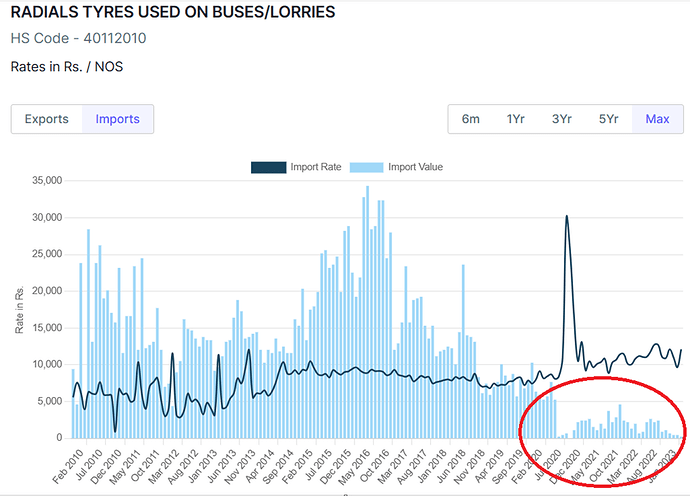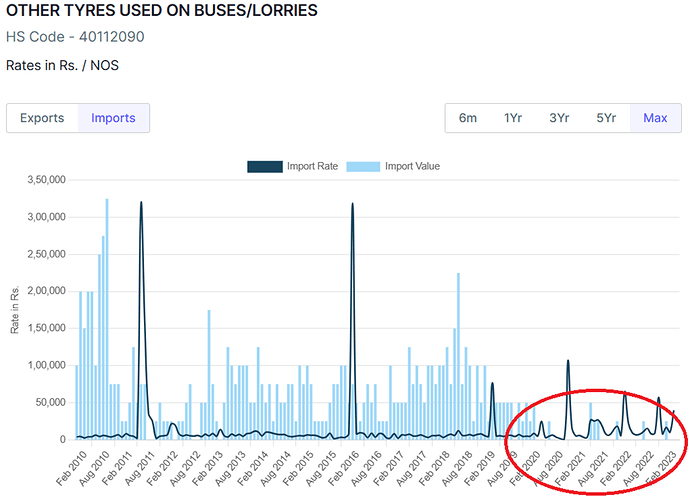After the Q4 FY23 results, the management guided for 15-20 % growth in revenues and 18 % EBIDTA for full year FY24. If this has to come true now, company needs to record a revenue growth of 28 % in the remaining 3 quarters of the year. Operating margin for Q1 was 12 %, so achieving 18 % for the full year is also a tall order. After Q4, the management said there was Chinese dumping in Thailand, and they erred in trying to hold on to their margins, which led to a loss of market share. But now, they have decided to match the prices and so volumes would recover. They did, but my impression was that while Thailand problems would be arrested, India was doing fine already.
But in Q1, volumes in India have dipped QoQ, and are now at 14,717 MT. At this rate, the volumes for the full year FY24 will be 58,868 MT, almost flat for the year. More worryingly, the Q1 presentation contains two sentences that foretell trouble ahead.
The CMD says there is “increased competitiveness in imports from global players”. I am not sure if he is talking about bead wire or tyre imports, but either way this is surprising and worrisome. Tyre imports were put on restricted list category in June 2020. Though the ban is still in place, it is possible the government has become more liberal in giving out licenses for import. Rajratan’s revenue boom had coincided with this tyre import ban.
Secondly, the investor presentation also talks about “expansion in capacity by one of the competitors”. It is not clear who this competitor is, but I understand the other main bead wire player in India is Tata Steel with a 33 % market share. Tata Steel’s AGM presentation talks about wire capacity expansion of 100,000 TPA underway. I assume this is wire rods, so not all of this will become bead wire perhaps, but their aggressive forward integration plans across the broader steel value chain are well known. Rajratan cannot win a price war with Tata Steel, since price cuts do not hurt them as much as they do Rajratan.
My reason for pointing out all this is that Rajratan is doubling its domestic capacity at a time when demand is under pressure and supply has increased. Even in the best of times last two years, the company has struggled to grow its India volumes as the below table shows:
Q1 FY24 results show company level margins have already gone back to pre-Covid levels. Pre Covid, the company’s average OPM was 10.89 %.
All this points to ominous signs going ahead, especially when we look at the Balance Sheet.
Consolidated Debt is currently at Rs.170 crore and will rise further in the coming year. Rs.30 to Rs.40 crore capex is the remaining for Chennai plant. Short Term Liabilities maturing within the next 1 year as per the latest Balance Sheet are Rs.130 crore. Assuming fixed operating costs of Rs.60 to Rs.70 crore per year and interest of Rs.20 to Rs.25 crore, the company needs around Rs.250 to Rs.300 crore of cash (40+130+70+25=265) to run its operations.
Currently, Receivables are Rs.136 crore. CFO in FY2023 was Rs.162 crore, but this includes strong numbers in the earlier part of the year. If we go back to pre-Covid numbers (which is what the coming year is going to resemble), CFO used to be in the range of less than Rs.50 crore per year, at around 10 % of revenues. At Rs.800 crore of revenues in FY24, this will be Rs.80 crore at the most. This (136+80=216) still leaves a gap of around Rs.50 crores to be filled at the minimum. This gap will have to be filled with more borrowings, which in turn creates further pressure on future cash flows, and so on.
And all of this is the optimistic scenario, as I have just annualized the Q1 numbers. If the declining trend in revenues (see image below) continues in Q2 – as it appears from the management commentary – things would be worse. Any further loss of volumes in the domestic market will spell the doom for the company. See the declining trend in the image below:
If we annualize the performance of Q1 for the full year (again: optimistic scenario!), company will end the year with a PAT of Rs.50 crore which gives an EPS of Rs.9.79 per share. At a median PE of 18.5 (pre-Covid was actually 15!), that gives a share price of less than Rs.200 per share.
To summarize, Rajratan’s debt funded capex is coming in at the wrong time, the expected demand pickup has not materialized and there is a supply glut in a commodity product. These problems are not cyclical but structural in nature.
(Disc.: No positions. I may be wrong, so do your own analysis.)
| Subscribe To Our Free Newsletter |






